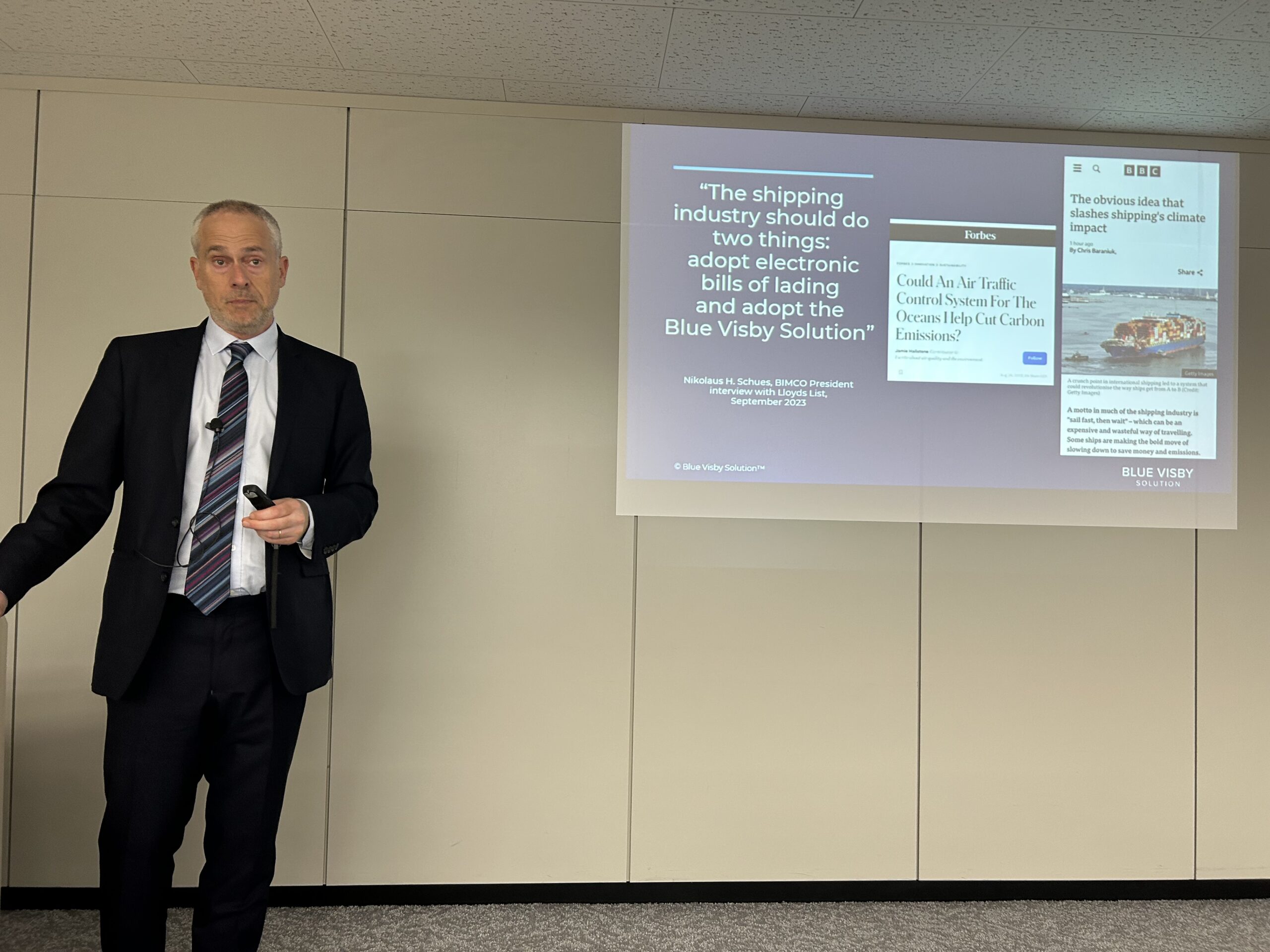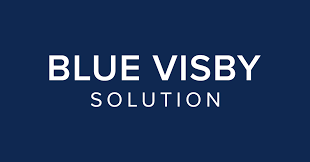〆Maritime Decarbonization Hinges on Rethinking Contracts:ブルー・ヴィズビー・ソリューション、Haris Zografakisが講演

“Stop the Rush: Maritime Decarbonization Hinges on Rethinking Contracts and Port Arrivals”
A radical shift in maritime operations may hold the key to decarbonizing global shipping: ending the widespread “sail fast then wait” practice. Through the Blue Visby Solution initiative, maritime lawyers, technologists, insurers, and shipowners are converging around a systemic answer to an inefficiency responsible for up to 20% of shipping’s carbon footprint. More than just software, the solution challenges long-standing contract norms and proposes operational, legal, and economic reforms to meet climate goals.
On May 12, Haris Zografakis, a partner at Stephenson Harwood LLP and a leading figure behind the Blue Visby Solution, delivered a presentation at a seminar jointly hosted by Stephenson Harwood LLP and Gard, the largest club within the International Group of P&I Clubs. In his talk, he outlined the goals of the Blue Visby Solution and the roadmap towards achieving them.
■Key Points of the Article:
- Outdated maritime contracts are a hidden barrier to decarbonization.
Traditional charter parties and sale contracts incentivize ships to “sail fast then wait,” leading to unnecessary emissions. Reforming these contracts is essential for enabling greener operations. - The “sail fast then wait” practice accounts for up to 20% of shipping emissions.
The Blue Visby Solution demonstrates that optimizing ship arrivals to anchorage—rather than berthing—can cut emissions by up to 15%, without requiring changes to port infrastructure. - A systemic, collaborative approach is needed beyond IMO regulations.
The solution combines legal, operational, technological, and economic tools—supported by shipowners, ports, insurers, and banks—to address the inefficiencies of maritime logistics at scale.
Text by Hirofumi Yamamoto
Photo courtesy = Blue Visby Solution, NAPA, Marubeni corp.
※This article provides a comprehensive account of Haris Zografakis’s presentation, conveying both the breadth of his insights and the passion behind his message. It explores the roadmap towards the goals of the Blue Visby Solution, draws comparisons with alternative fuels, and examines the pivotal role of Scope 3 emissions in driving meaningful change.

〆「“急いで航行、港で待機”の常態を変えよ:海運の脱炭素化は契約改革から」
世界の海運業界で、排出削減の鍵を握るのは、意外にも「契約の見直し」かもしれない。ブルー・ヴィズビー・ソリューション(Blue Visby Solution)と呼ばれる国際的な取り組みは、港の混雑を前提とした「全速航行後の待機」という慣行が、業界全体のCO₂排出量の最大20%を占めていると指摘。この商習慣の見直しを通じて、即効性のある脱炭素化を実現しようとしている。単なる技術論ではない。契約、運用、経済インセンティブを包括的に改革する構想である。
Blue Visby Solutionの活動をけん引するStephenson Harwood LLPのパートナーのHaris Zografakis氏は5月12日、Stephenson Harwood LLPと、国際P&Iクラブ(International Group of P&I Clubs)の中で最大のクラブであるGard共催セミナーでBlue Visby Solutionの目指すゴール、その道筋について講演した。
この記事の主なポイント:
- 旧来型の海運契約が脱炭素化の隠れた障害となっている。
従来の用船契約や売買契約は、「全速航行後に待機する」という慣行を助長し、不要な排出を引き起こしている。これらの契約を見直さなければ、環境に配慮した運航は実現できない。 - 「セイル・ファースト・ゼン・ウェイト(急いで航行して港で待機)」の慣行は、海運の排出量の最大20%を占める。
ブルー・ヴィズビー・ソリューションは、港の接岸ではなく錨地への到着最適化により、最大15%の排出削減が可能であることを示しており、港湾インフラの改革なしに実現できる実効的な対策とされている。 - IMO規制を超えたシステミックかつ協調的なアプローチが必要である。
本ソリューションは、法務、運用、技術、経済の各要素を統合した包括的な取り組みであり、船主、港湾、保険会社、金融機関など業界全体が連携して、海運物流の構造的な非効率性に対処することを目指している。
Text by Hirofumi Yamamoto
※本文ではBlue Visby Solutionが目指すべきゴールへの道筋、新燃料との比較、カギを握るスコープ3の考え方など広範囲なHaris Zografakis氏の講演内容、情熱が伝わる講演内容を読むことができます。








コメント